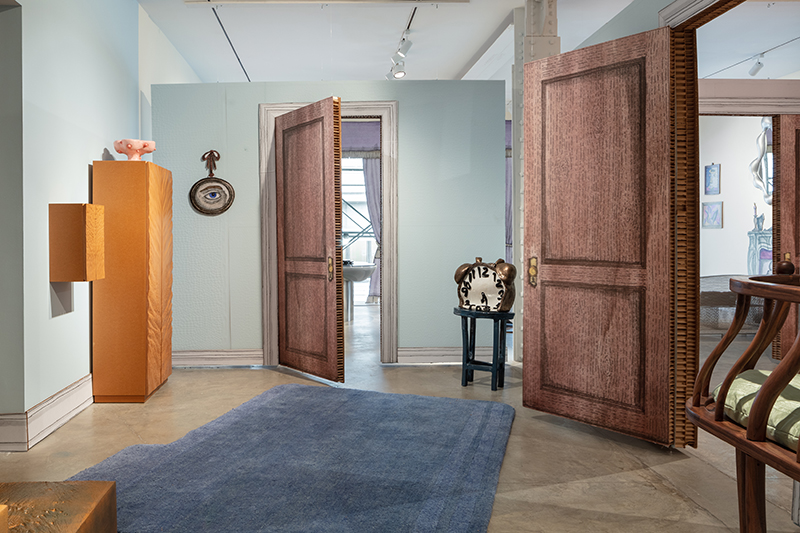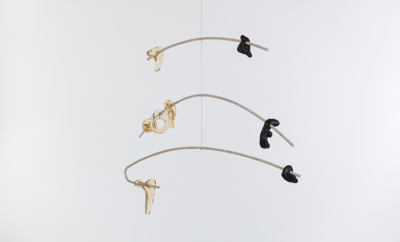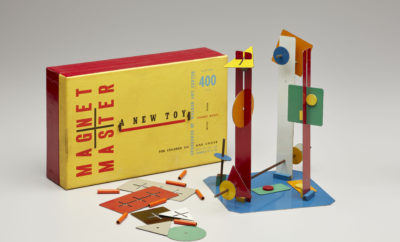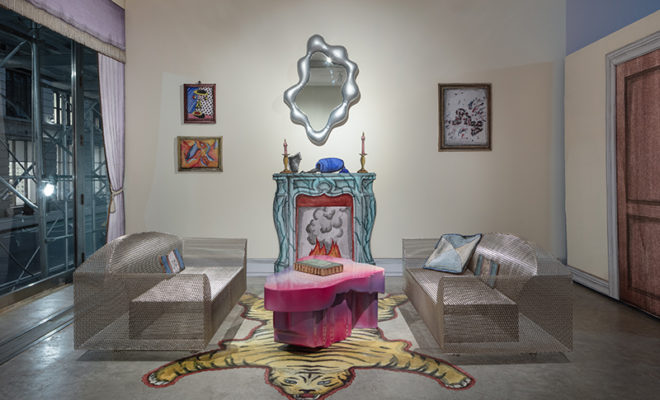 Installation shot from Blow Up at Friedman Benda. Photograph by Timothy Doyon.
Installation shot from Blow Up at Friedman Benda. Photograph by Timothy Doyon.
Exhibition
At Friedman Benda, A Dollhouse Comes to Life
What makes a perfect home? For many designers, collectors, and design aficionados, creating a space we would consider “perfect” is nearly impossible, given the constant influx of new styles and designers, and, most pressing to those of us living in cities, a lack of available floor space. In Blow Up at Friedman Benda, curator and editor of Pin-Up magazine Felix Burrichter playfully prods at our quixotic obsession for the perfect living space. Framing his exhibition within a human-scale dollhouse, designed in collaboration with Adam Charlap Hyman of Charlap Hyman & Herrero, he aims to turn our conception of a flawless interior on its head. But this is not just a postmodern romp through a designer’s playground. Beneath all the Technicolor, Burrichter also asks us to question the “bourgeois standards” we impose on ourselves as contemporary homemakers and the issues of “morality that we embed in furniture.”
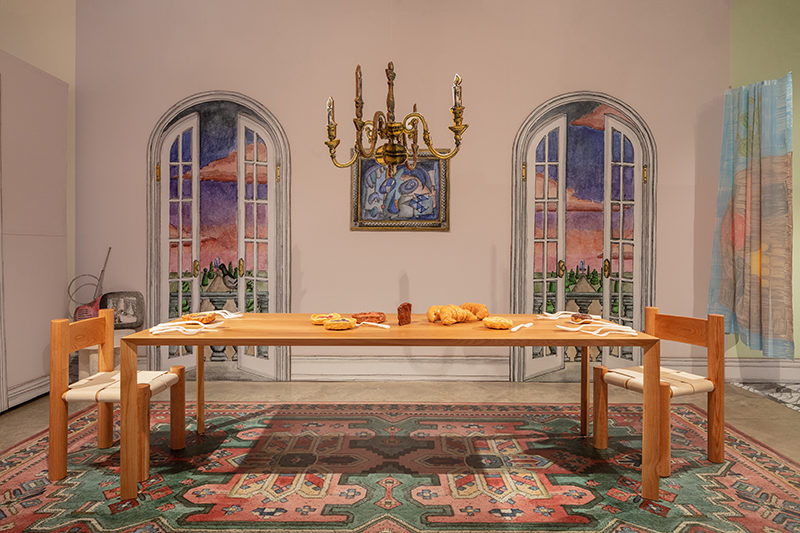
Installation shot from Blow Up at Friedman Benda. Photograph by Timothy Doyon.
With more than a dozen works commissioned especially for the show by a wide range of designers, Blow Up is a testament to Burrichter’s desire to furnish his model home with both contemporary and classic pieces. Working with Charlap Hyman, the two created a model of the typical spaces found in a dollhouse: a kitchen, dining room, living room, nursery, and bedroom, and sought out designers to fill the spaces. Together, the variety of materials and styles create a charming miscellany, “like how you would have mismatched furniture in a dollhouse,” Burrichter explains.
On stepping into the dining room, one immediately recognizes Katie Stout’s Tinder chair as the touchstone piece of the exhibition. A 2018 edition of a project Stout completed while in college at RISD, the Tinder chair is an exact 1:1 replica of a dollhouse chair. Its rounded oak frame and canvas strap seat emit all of the warm, fuzzy feelings of a child’s chair, but on a grown-up scale. This effect is present throughout the exhibition, but is especially prominent in Stout’s piece, which characterizes, as Charlap Hyman explains, “that funny thing that happens between the small depiction of a piece and the final realization. How there’s a connect or disconnect that’s sometimes odd.”
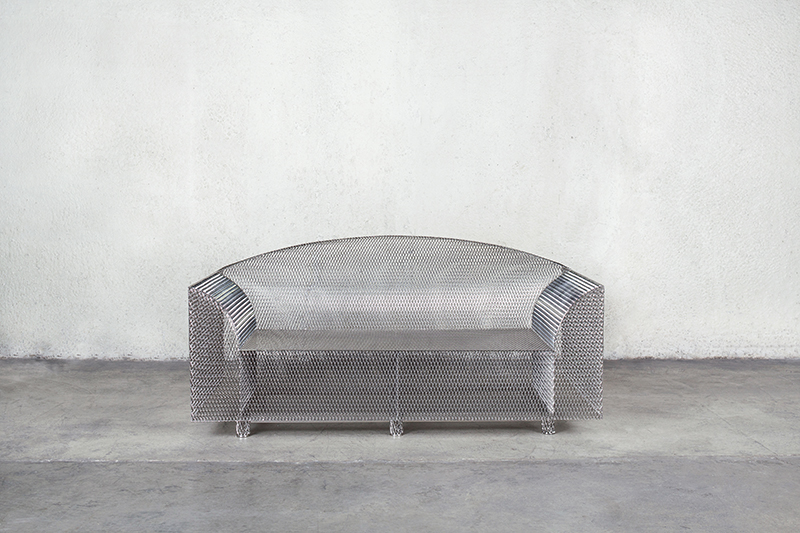
How High the Moon sofa by Shiro Kuramata. Photograph by Daniel Kukla courtesy of Friedman Benda and the artist.
The nickel-plated steel-mesh sofas by Shiro Kuramata in the living room perhaps lack a sense of childhood comfort. However, their distinctive shape models another important aspect of dollhouse furniture explored in the show: typologies. Of course, with Burrichter, these typologies do not fit the stereotypes. Two telephones by Camille Henrot, for example, have bulbous receivers (one in bright violet) that broadcast pre-recorded messages like, “if there is an emergency, please hang up and dial 911,” a far cry from the cheery messages delivered from our bygone toy landlines.
The nursery features a motorized rocking crib by Saša Štucin and Nicholas Gardner for Soft Baroque. It also contains the most intimate project in the exhibition, a set of cabinets by Peter Marigold textured with patterns taken from the ankle and knuckle of himself and his son.
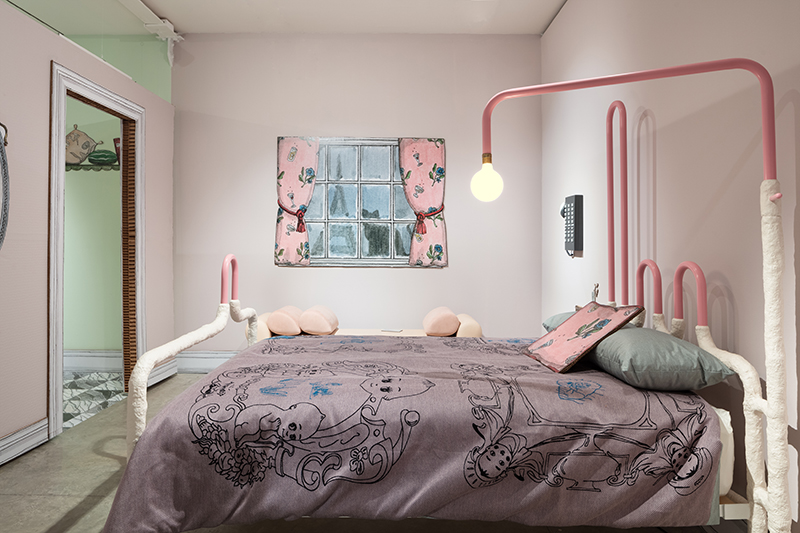
Installation shot from Blow Up at Friedman Benda. Photograph by Timothy Doyon.
A textile by Oona Brangam-Snell in the bedroom is decorated with childish drawings bordered with outlined frames, recalling a coloring book. Set on a tubular steel–framed bed by Jonathan Trayte, the ensemble takes on the look of a brightly drawn tableau.
The rarest piece, a steel sink by Wolfgang Laubersheimer for the Pentagon Group, was a prototype created for the Promodo model kitchen in 1988.
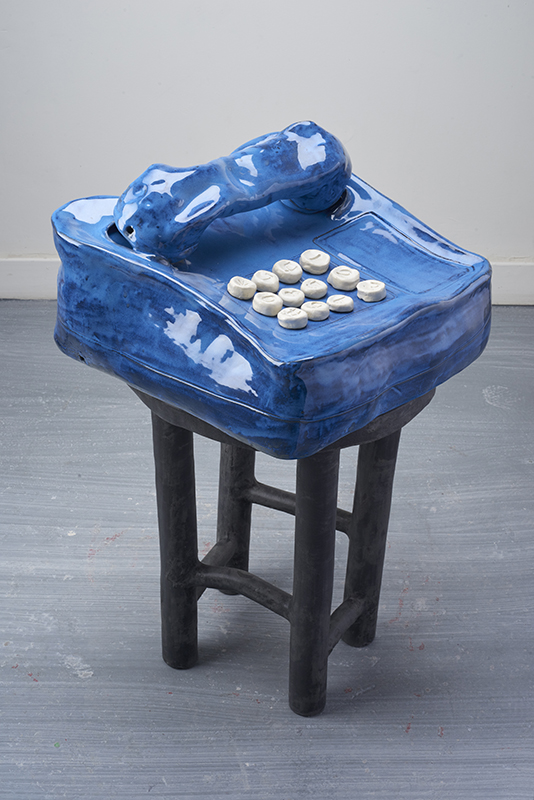
Didn’t get the message by Woody De Othello. Courtesy of Woody De Othello and Jessica Silverman Gallery.
Throughout the exhibition, paintings of playgrounds designed by Isamu Noguchi, done in the style of modernist masters by Charlap Hyman, are “hung” on corrugated-cardboard walls. Look closely in the bedroom, and you’ll find the lost Rubens from the Isabella Stewart Gardner Museum painted in the attic. But the exhibition is “not just a postmodern joke,” cautions Charlap Hyman. “It’s supposed to be a reflection of a dollhouse in the eyes of an adult. It has a lot of celebratory, playful, fun things about it, but it also has some of the darkness of real adult life.” A melting ceramic phone and empty laundry basket by Woody De Othello, titled Didn’t Get the Message and Lonely and Alone, most obviously betray the not-so-fun aspects of being an adult in a real house. But it’s these two levels, the array of fantastical pieces and a deeper questioning of the role of furniture and perfection in our homes, that give Blow Up both its charm and its gravity.
Blow Up is on view at Friedman Benda, New York until February 16.


